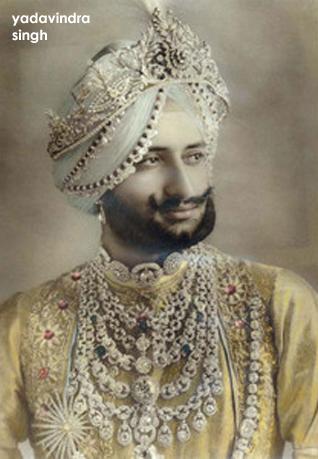
Yadavendra Singh
There is a mistaken notion that
the first-ever ‘royal personality’ to represent India in official Test cricket
was Iftiqar Ali Khan, the senior Nawab of Pataudi. The credit goes to the
impeccable credentials of the Yuvraj of Patiala, Yadavendra Singh.
The tall, strong and handsome Sikh possessed a
heart as big as his frame. Never took advantage of his royal status. Never
craved for power. Knew not pettiness. In an age when ‘royalty’ was expected to lead
on and off the field, Yadavendra Singh readily offered his services to play a
Test match under the leadership of the ‘commoner’, CK Nayudu.
The opposition was England. The
season was 1933-34 and the venue happened to be the first-ever Test at Chepauk
in the heart of Chennai. With Douglas Jardine as the opposition skipper, no
player – royalty or commoner – could expect any mercy.
Unlike Natwarsinhji (Porbandar)
and Ghanashyamsinhji (Limbdi), the young prince of Patiala was an outstanding
batsman, who hit the ball with immense power. Particularly fond of
cover-driving, the ferocity of the hook stroke attracted him. To bat against
the likes of Mohammed Nissar, among the fastest-ever, was no joke, especially
on the coir-matting pitches of Northern India. Yadavendra used the bat as a
scimitar whenever he found the time for cricket from his busy schedule of
Patiala State duties.
After the Tests at Bombay
Gymkhana and Eden Gardens, where the Indian batting had not fared too well, the
selectors opted for Yadavendra at Chepauk. In those days the Madras Cricket
Club saw to it that the pitch had a rich layer of grass to make the contest
between bat and ball even.
In the first innings, debutant Yadavendra
Singh notched an uncharacteristic, sedate 24 to Vijay Merchant’s 26. But in the
second outing the young prince was at his attacking best against the likes of
Headley Verity, Clark and Nichols. His ferocious hook to the left of the leg
umpire had even the tough Jardine nod in approval. His magnificent 60 was
India’s highest score in the innings. The athleticism of Yuvraj came to the
fore as snapped both the catches that came his way.
As it transpired, this Test was
both his debut and swan-song. He was a certainty for India’s following tour to
England in 1936. But the Yuvraj could not find the time from his pressing
duties as the monarch of Patiala. Cricket’s loss was Patiala’s gain.
Yadavendra’s father was the
Maharaja of Patiala, Bhupinder Singh, who was the numero uno among the patrons
of Indian cricket. In 1911 Bhupinder sponsored the first-ever fully representative
India team to England to gain experience. Patiala’s team was not restricted to
any community or province. That would go completely against the grain of this
generous visionary. He invited players from all over India. He was the man who
donated the Ranji Trophy, the symbol of India’s premier cricket championship.
The House of Patiala’s contributions to Indian sports are too numerous to be
mentioned here.
Despite such magnanimous
contributions to Indian cricket, neither father nor son ever jockeyed for posts
in the hierarchy of Indian cricket. Ironically neither was ever a president of
BCCI. They all along stayed away from its musty corridors. They were among the wealthiest and the most
influential of the royal families, yet they never bothered to dominate the
BCCI. They helped Indian cricket like no other, yet they never stayed back to
enjoy the benefits. They let the petty and the corrupt to crawl in the stench.
Patiala’s contribution to Indian cricket has been forgotten because they never
bothered about publicity or power.